George Plimpton (1927–2003)
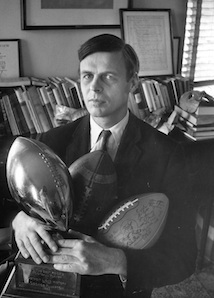
George Plimpton was the editor of The Paris Review from its founding in 1953 until his death in 2003. A graduate of Harvard University and King's College, Cambridge, Plimpton was recruited to Paris by Peter Matthiessen in 1952 and signed on to the project shortly thereafter. “I’ve decided to stay over here in Paris and run this magazine,” he wrote to his parents. “I think I’d be a fool not to.”
Aside from his lifelong commitment to The Paris Review, Plimpton is best known for his forays into the world of professional athletics: he earned a bloody nose while sparring with Archie Moore in 1959; he exhausted himself during an outing as a pitcher against a series of MLB All Stars in 1960; he lost thirty yards during a stint as quarterback for the Detroit Lions in 1963; and he was trounced in golf by Arnold Palmer and Jack Nicklaus in 1967 ... despite a personal handicap of 18. His knack for participatory journalism also led him to test his acrobatics as an aerialist for the Clyde Beatty–Cole Brothers Circus—he failed miserably—and to try his hand as a percussionist with the New York Philharmonic (where a miss-hit on the gong earned him the immediate applause of conductor Leonard Bernstein).
All told, Plimpton authored more than fifteen books, including Paper Lion, Out of My League, and The Bogey Man. He also appeared in more than thirty films, including Lawrence of Arabia, Rio Lobo, and Good Will Hunting. Plimpton was made an officier of L’Ordre des Arts et des Lettres and a chevalier of the Legion d’honneur, and was elected a member of the American Academy of Arts and Letters.
William Pène du Bois (1916–1993)
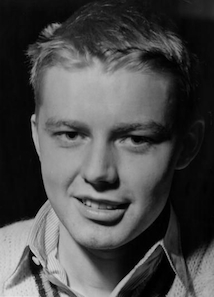
William Pène du Bois was the Paris Review art editor from 1953 to 1960. He designed the Paris Review logo, a depiction of the hadada bird, that graced the magazine’s cover from its first issue to its twenty-seventh, and again from issue 174 to issue 193. His illustration of the Place de la Concorde now appears as the magazine’s frontispiece.
Pène du Bois is best remembered for authoring and illustrating The Twenty-One Balloons, winner of the Newbery Medal in 1948. He also illustrated books by Jules Verne, Isaac Bashevis Singer, Rumer Godden, Claire Huchet Bishop, and John Steinbeck, among many others. He won Caldecott Honors in 1952 for Bear Party and in 1957 for Lion.
Thomas H. Guinzburg (1926–2010)
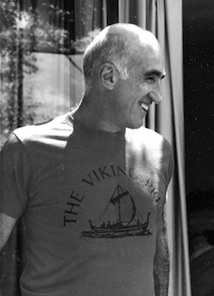
A Marine veteran awarded the Purple Heart for his service in World War II, Tom Guinzburg met Peter Matthiessen at Yale, where they roomed together and where Guinzburg served as the managing editor of the Yale Daily News. According to John Train, Guinzburg was handpicked as the first managing editor of the Review ... until, that is, “he became paralyzed with love for Francine du Plessix, now Gray, and was unable to proceed.” His editorial input was nevertheless always well respected thereafter, and in the nineties he served as president of the board of directors. As Matthiessen recounts, “He knew a good deal about publishing since his father was head of the Viking Press, as he would be himself.”
Harold L. Humes (1926–1992)
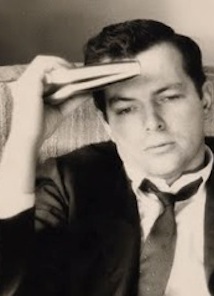
Doc Humes left The Paris News Post—described by John Ciardi as “the best fourth-rate imitation of The New Yorker I have ever seen”—to serve as The Paris Review’s first managing editor in 1953. He didn’t last long. Lured away from Paris by a graduate program at Harvard, Humes found himself relegated to the position of advertising and circulation manager, a demotion that he wholeheartedly resented. (His disapproval is recounted in issue 79: “Humes’s debasement came to his attention when the first shipment of magazines arrived in New York. He was furious. He hurried down from Cambridge. He had a rubber stamp made up with his name and an exalted title. Down on the wharves he got into the shipping crates where he began stamping the masthead page of the magazine in red ink, half a thousand copies or so, until his arm got tired.”)
Humes was to become a fixture of the Parisian and American literary communities of the fifties and sixties. He published two novels, The Underground City (1958) and Men Die (1959), and was cited by Esquire as one of the most promising young novelists in the U.S., alongside John Updike and William Styron. His third novel, The Memoirs of Dorsey Slade, was unfinished at the time of his death.
Peter Matthiessen (b. 1927–2014)
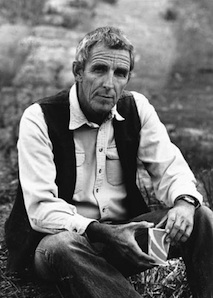
The Paris Review was first conceived of in a series of conversations in 1951 between Peter Matthiessen and Doc Humes. As Matthiessen later recounted, “Doc wanted me to serve as fiction editor at The Paris News Post, but the first story I acquired—‘The Sun and the Still-Born Stars,’ by a young unknown writer named Terry Southern—was so much better than his magazine that I persuaded him to put to death The Paris News Post and start a new literary magazine.”
Matthiessen was the only Paris Review founding editor to have established himself already as a legitimate writer. He had begun to publish short stories in the early fifties—his first published story appeared in The Atlantic the year he graduated from Yale—and his first novel, Race Rock, would be published in 1954. Matthiessen had been sent to Paris by the newly created CIA. Recruited into the agency by a Yale professor named Norman Holmes Pearson, Matthiessen agreed to the assignment largely for the opportunity it afforded him to pursue a career in writing.
Peter Matthiessen published more than thirty books, including his most well-known novels, At Play in the Fields of the Lord (1965) and Far Tortuga (1975), and his travel journal, The Snow Leopard (1978). He was a two-time National Book Award winner and was elected to the American Academy of Arts and Letters in 1974. He served on The Paris Review’s board of directors and died in 2014.
John P. C. Train (b. 1928)
John Train was the magazine’s first proper managing editor—or “so-called managing editor,” as he liked to refer to himself. He is credited among the founders for devising and lobbying for the name Paris Review and, though his tenure was short, he had a hand in directing the Review away from the contemporary fascination with literary and political criticism and toward the literature itself. As he later stated in a Paris Review retrospective, “To deflect one’s gaze—in one’s all too limited time—from art itself to forms of words about art was a big step down from the juicy reality toward the dry and derivative.”
John Train later went on to found a money management firm—Train, Babock Advisors LLC—in New York in 1959. He is the founder and chairman of the Train Foundation and has received appointments from Presidents Ronald Reagan, George H. W. Bush, and Bill Clinton.